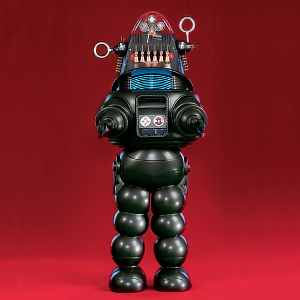ROS – Robotic Operating System
 An Open Source Robotic Operating System. How cool is that?!
An Open Source Robotic Operating System. How cool is that?!
Open-source Robot Operating System
Wired – The coding world is getting weirder. You’d think that a guy who aspires to be the artisan maestro of world robotic operating systems would have some kind of real job and an official title, but not only does he not have one, he doesn’t much seem to need one.
‘The masterstroke in Quigley’s design is not strictly technical but social.’ Actually, it’s strictly technically social, because if you strip the support hardware and social-code out of the ROS scene and try to write it all down with a paper and pencil, there’s nothing there; it’d be like Facebook done as a college yearbook.
Three decades ago, the availability of many versions of DOS helped spark the boom in personal computers. Today, Robot Operating System, or ROS, is poised to do the same for robots. Morgan Quigley programmed the first iteration of what grew into ROS as a graduate student in 2006, and today his open-source code is redefining the practical limits of robotics. Since version 1.0 was released in 2010, ROS has become the de facto standard in robotics software.
‘To visit Quigley’s office at the Open Source Robotics Foundation in Mountain View, California, the organization he cofounded last summer to steward ROS, is to step into a future of robotics where hardware is cheap, and it’s quick and easy to snap together preëxisting pieces to create new machines. Quigley’s workspace is littered with dozens of mechanical fingers—modules that form a robotic hand. “The hands themselves can talk ROS,’ Quigley says. His T-shirt is emblazoned with a programming joke: shirtcount++;.
(((Tangentially — ever since I started blogging about robots on the site here, you should see how my advertising pop-ups have changed. I don’t know which surveillance-marketer is on my case, but they’ve got me staked-out demographically as some kind of Quigley-in-waiting; I’m getting pitches for Arduinos, Leap Motions, even hardware I’ve never heard of, and I thought I’d heard of plenty.)))
Unlike more conventional robotic technology, Quigley’s four-fingered hand is not controlled by a central processor. Its fingers and palm distribute computing chores among 14 low-cost, low-power processors dedicated to controlling each joint directly. That greatly simplifies the internal communication and coördination (((<— TECHNOLOGY REVIEW has automatic umlauts in their website code, that’s pretty impressive))) required to execute a task such as picking up a pencil. Both the software and electronics are open source. Any robot builder can take Quigley’s design and use or improve upon it.
Ultimately, Quigley hopes, these innovations will lead to more agile, more capable robots that can perform a variety of jobs and don’t cost tens or hundreds of thousands of dollars. And no longer will engineers have to start from scratch to design the functions that go into a robot—they’ll have an open-source base of code and hardware. Already, engineers using ROS are working on robots that do everything from folding laundry to repetitive operations in advanced manufacturing. ‘It will allow applications we couldn’t dream of before,’ Quigley says….”